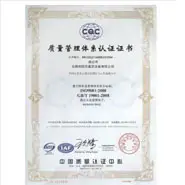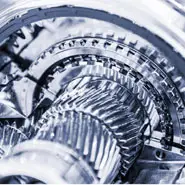1. Check the oil level frequently. If it does not meet the requirements, adjust it to meet the requirements. When the vacuum pump is running, the oil level shall be subject to the center of the oil standard.
2. Regularly check the oil quality. If the oil is deteriorated, replace it with new oil in time to ensure the normal operation of the vacuum pump.
3. The oil change period shall be considered according to the actual service conditions and whether it can meet the performance requirements, and shall be decided by the user at his discretion. Generally, when a new vacuum pump is used to pump clean and dry gas, it is recommended to change the vacuum pump oil once after working for about 100 hours. After the ferrous metal powder is not visible in the oil, the oil change period can be appropriately extended in the future.
4. Generally, the vacuum pump shall be overhauled after 2000 hours of operation, check the aging degree of rubber seals, check whether the exhaust valve plate is cracked, and clean up the dirt deposited on the valve plate and exhaust valve seat. Clean the parts in the whole vacuum pump cavity, such as rotor, rotor, spring, etc. It is usually washed with gasoline and dried. After cleaning the rubber parts, dry them with a dry cloth. Handle with care during cleaning and assembly to avoid bumping.
5. Clean the pipe if possible to ensure that the pipeline is unblocked.
6. After reassembly, the test run shall be carried out. Generally, it must run empty for 2 hours and change the oil twice. Because a certain amount of volatile substances will be left in the vacuum pump during cleaning, it can be put into normal operation after normal operation.
7. Check whether the vacuum pump pipeline and joint are loose. Turn the vacuum pump by hand to see if the vacuum pump is flexible.
8. Add bearing lubricating oil into the bearing body, observe that the oil level should be at the center line of the oil standard, and the lubricating oil should be replaced or supplemented in time.
9. Unscrew the water diversion plug of the vacuum pump body and fill the water diversion (or slurry diversion).
10. Close the gate valve, outlet pressure gauge and inlet vacuum gauge of the water outlet pipeline.
11. Jog the motor to see if the motor turns correctly.
12. Start the motor. When the vacuum pump operates normally, open the outlet pressure gauge and the inlet vacuum pump. After it shows appropriate pressure, gradually open the gate valve and check the motor load at the same time.
13. Try to control the flow and head of the circulating water vacuum pump within the range indicated on the label, so as to ensure that the vacuum pump operates at the efficiency point, so as to obtain the energy-saving effect.
14. During the operation of the vacuum pump, the bearing temperature shall not exceed the ambient temperature by 35 ℃ and the temperature shall not exceed 80 ℃.
15. If any abnormal sound is found in the vacuum pump, stop it immediately to check the cause.
16. When the vacuum pump is to be stopped, first close the gate valve and pressure gauge, and then stop the motor.
17. The lubricating oil of the vacuum pump shall be changed after 100 hours within one month of operation, and then every 500 hours.
18. Adjust the packing gland frequently to ensure that the leakage in the packing chamber is normal (drip leakage is preferred).
19. Regularly check the wear of the shaft sleeve, and replace it in time after large wear.
20. When the vacuum pump is used in cold winter, after shutdown, unscrew the drain plug at the lower part of the pump body to drain the media. Prevent frost cracking.
21. If the vacuum pump is out of service for a long time, all the pumps shall be disassembled, the water shall be wiped dry, the rotating parts and joints shall be coated with grease, installed and kept properly.






